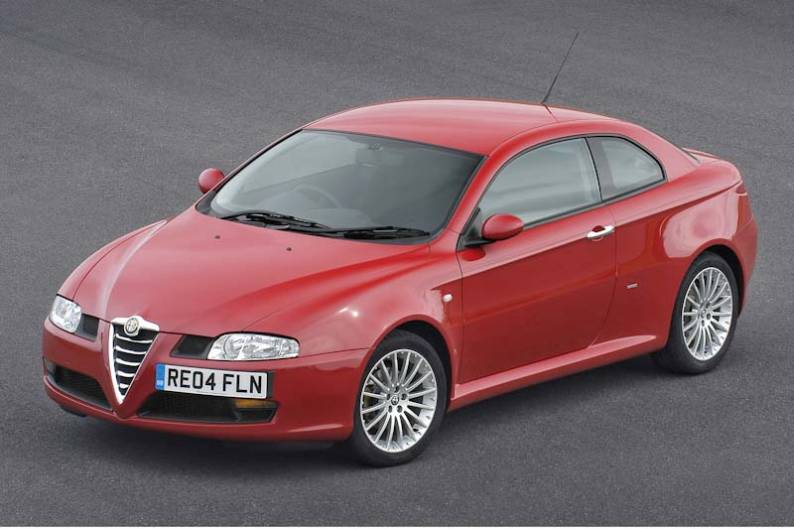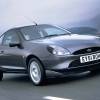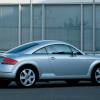
RAC sale – up to 33% off*
• Roadside cover from £5.29 a month†
• We get to most breakdowns in 60 mins or less
• Our patrols fix 4/5 breakdowns on the spot

BY ANDY ENRIGHT
Introduction
When it comes to buying a used Alfa Romeo GT coupe, there will be a huge proportion of buyers who will disregard any objective advice given in reports such as this. The key criterion for such people is to get That Shape on their driveway for as little outlay as possible. It's a seductive looking thing and one that shows Alfa styling back at its brilliant best. If you want the prettiest shape currently gracing our roads for sensible money, here's what to buy. Just be aware that the car can have a few idiosyncrasies.
Models
Models Covered: (3dr Coupe [2.0, 3.2 petrol, 1.9JTD diesel])
History
Building cars is an expensive business. We only have to look at the demise of MG Rover to realise quite how much it costs to put a new model on the road. Therefore when manufacturers get the opportunity to spread the investment in a new model over a few different variants, it makes financial sense to do so. Alfa's 147 hatch had enjoyed notable success, picking up a Car Of The Year gong upon launch, and retaining the same chassis but grafting on a sleek coupe shape was a cost effective and expedient way of adding a car to the line up to replace the ageing GTV model.
Few realised quite how right the resulting shape would look. Launched in March 2004, the styling house Bertone were responsible for most of the design and the GT was originally pencilled in to be assembled at their Turin plant where spare capacity had been freed up by the demise of the Fiat Punto Cabriolet. After many beans were counted, however, Alfa Romeo thanked Bertone very much for their penmanship and decided to build the GT alongside the 147 at their Pomigliano d'Arco plant just outside Naples. The range was launched with 2.0-litre and 3.2-litre petrol engined variants and a 148bhp JTD turbodiesel.
What You Get
The Alfa Romeo GT really has no business looking as good as it does, as closer inspection will reveal that it's something of a mix and match between 156 saloon and 147 hatch. The tape measure shows that the car rides on the 2596mm long 156 wheelbase but underneath the pretty styling, the firewall, the pedal box, the steering column and the entire climate control system are pure 147. The front wings are shared with the 147 GTA although the bonnet has been slightly modified.
The cowled instruments and sporting logos that can look a little overblown on a base 147 hatch suddenly make all sorts of sense in a 'proper' coupe. The script on the dials has been revised for the GT, the centre console has been redesigned and the material used for the dashboard is of a different texture to standard 147. Many will be sold on the GT long before their slacks hit the seats. Much of that will be due to the swoopy styling. Much of it is contemporary Alfa Romeo, particularly around the front end where few will be able to distinguish GT form 147 as it arrives in their rear view mirror. As the GT slides by, however, a high-waisted scalloped flank is evident with a stub tail that's almost reminiscent of an early eighties Giulietta. Unlike the Giulietta, however, that 'boot' is in fact a bit of automotive trompe l'oeil, opening to reveal a gaping hatchback. There's 320 litres of room back there, which is a good deal more than a 147 hatch can muster with its rear seats in place and almost as much as the 156 saloon.
What You Pay
Please fill in the form here for an exact up-to-date information.
What to Look For
The GT feels well built and for those who do know how to wield a spanner it isn't the nightmare to work on the Alfa's of yore were. The Selespeed model should be tried before you buy as it's a love/hate thing. It also has an appetite for clutches if used predominantly as an urban scoot. Check the big alloys for kerbing damage. The interior trim is generally of good quality although the metallic paint on some of the plastic surfaces isn't too durable. Check the underbody, front spoiler and sump on the 3.2-litre model as enthusiastic driving on bumpy B-roads can bring these parts into contact with terra firma.
Replacement Parts
(based on a manual 2.0) A clutch assembly is around £138. Front and rear brakepads are around £50 per set of each, a rear exhaust box about £143 (excluding catalyst), a starter motor around £190. A replacement headlamp is about £145.
On the Road
Three engines made the cut for the UK, including a 162bhp 2.0-litre JTS petrol unit or the even more advanced 148bhp 1.9-litre M-Jet 16v diesel. Flagship buyers get a 3.2-litre V6 petrol model. The asking figures don't appear too steep for a car that makes plenty of more expensive rivals look decidedly frumpy. Track down a used GT with the optional 18-inch wheels and it looks devastating.
The big wheels won't utterly destroy the ride either as the suspension on the GT feels a good deal more compliant than anyone with experience behind the wheel of 147 and 156 models might expect. That said, there's also less roll, although an extended test on the sort of British B-roads that rather exposed the 147 GTA would be recommended. The body is 15 per cent stiffer than a 147 hatch and this gives the suspension engineers a much better baseline to work from. There's still some dive under braking in the diesel version which maybe doesn't bode so well for the heavier engined V6 model but otherwise it's a very creditable showing. The steering lacks feel but the rack is very sharp and you'll be able to jink the GT around corners with virtually zero hesitation. The VDC stability control system is probably the second best in the whole car industry after Porsche's PSM in the way that it allows a little bit of fun before gently and reassuringly reverting things to a keel more even.
Performance from the 2.0-litre JTS engine is punchy, the engine accelerating the GT to 60mph in 8.4 seconds and on to a top speed of 135mph, but the 1.9-litre M-Jet 16v diesel is the star of the show here. On-paper performance figures are only slightly down on the petrol car at 9.6 seconds and 130mph respectively but the 225lb/ft of torque means that it feels almost comically powerful in the mid range for such a modestly sized engine. The big payoff comes in terms of fuel economy, averaging over 42mpg. The emissions of 178g/km are a fair return for such a fun vehicle.
Overall
You can forgive a lot of faults when a car looks this good. When the faults have largely been ironed out, you know you're onto a winner. Recommending used Alfa Romeos has often been a risky business, but here's one that merits the thumbs up.







